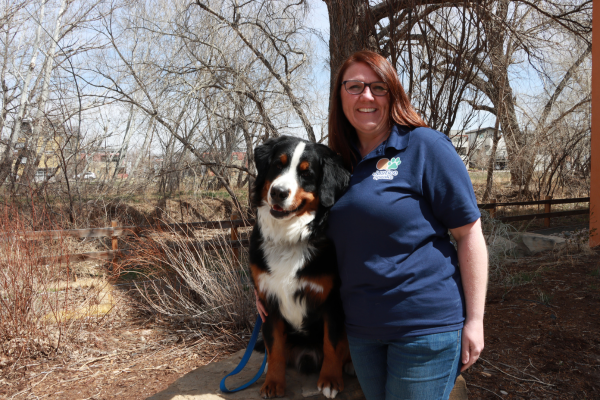My service dog, Justice, is a huge part of my life. She is trained to perform tasks that are unique to my particular needs. Specifically, Justice is an alert dog: she alerts me of different sounds that I may not otherwise hear. Service dogs provide a variety of tasks based on the needs of their handler. According to the Americans with Disabilities Act of 1990, service dogs are dogs that are individually trained to do work or perform tasks for people with disabilities. Let’s dive into what that means.
Qualifying Service Dogs
In order for a dog to become a service dog, she must be fully trained to perform a job or task that helps the handler’s disability. I have experienced that it takes a special kind of temperament for a dog to succeed or “qualify” as a service dog. They qualify working dogs in every way, but service dog training can start when the dog is as young as 3 weeks old and last two years, all while high-quality, reputable breeders and trainers test the dog to make sure their job is what the dog wants and is able to do. It’s a big process to go through, and not all dogs qualify.
The Many Roles a Service Dog Can Play
Different roles meet different needs and require different types of training. Someone who is blind must have a much more in-depth training with their animal, and they won’t be able to train their own animal, like I was with Justice. I preferred to do my own training because it helped me bond with Justice. To successfully train a service dog, you have to learn how a dog communicates, and you have to have an incredible amount of patience. I didn’t realize this at first!
In my training we had a 12 year old girl with a Golden Doodle who was trained to sniff out peanuts for her deadly peanut allergy. We also had a veteran with PTSD who used his dog to help calm him from night terrors. The dog was very docile in the day, but very active at night. Another young girl used her Great Dane for mobility issues. She couldn’t use the lower part of her body and that big dog would help her stand and help her work on muscle building.
Common Misconceptions About Service Dogs
There are a lot of misconceptions about service dogs. Here are just a few:
- If a service dog is sleeping, don’t ask to pet it. Even if it looks like it’s not working I can assure you it’s just resting its eyes! Service dogs on duty are always paying close attention and doing their job.
- Not everyone knows that you need to have a visible or invisible disability to qualify for a service animal. I think everyone has to navigate their own healthcare, and if you think your disability qualifies you for a service dog, then it’s time to start talking to a doctor.
- Service animals are not required to wear vests, nor do they have to have any official licensing. I find it helpful to keep the vest on my dogs, so both the dogs and other people know they are working. It provides a little barrier to the public, who hopefully will recognize and respect the dog’s duties and that they need to be left alone.
Service Dog and Handler Rights
Service dogs are an amazing tool for people with disabilities. A service dog provides independence so that their handlers are not dependent on other people to take care of them. Deaf and blind people may use their service dogs to a different degree than others.
Handlers and their service dogs have basic rights. We get to go into the same facilities, with our dogs, that other people get to go into. We get to attend the same types of services and events that people get to attend. And we get to basically function like everyone else. We get up in the morning and go to bed at night – it’s the same thing! We just have a tool with us to help us do our job.
Understanding service dog and handler rights is a huge part of supporting the disabled community and ensuring the world is as accessible for them as it is for everyone else. Have you ever seen a service dog in action? What were they doing? How did people respond to them?


